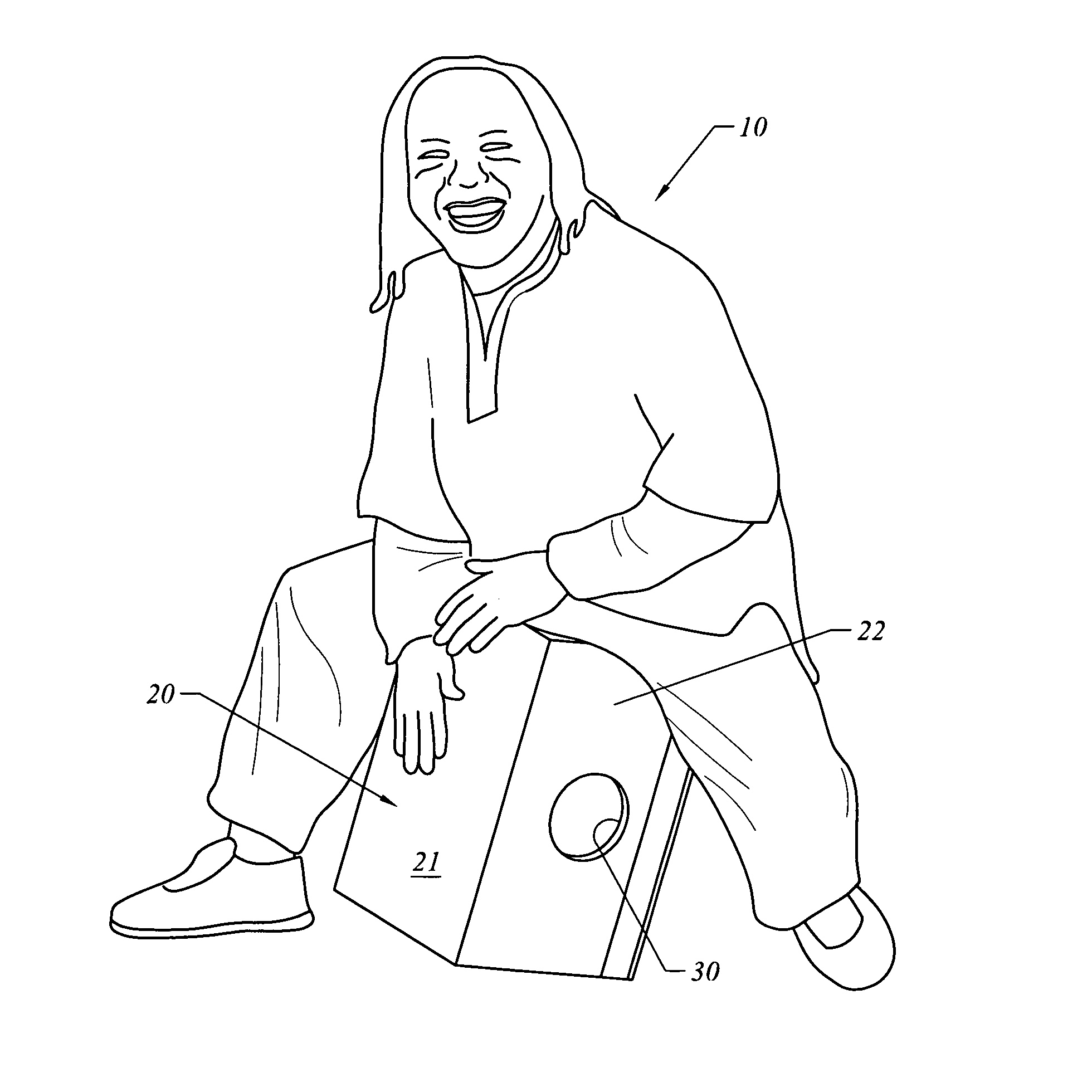- Rockin’ Patent®: US Patent No. 7,928,303
- Filed: 28 February 2008
- In the name of: Riley Investments LLC
- Title: Insert For Cajon Drum
- What’s claimed: “Apparatus for lowering the fundamental frequency of a cajon drum, wherein said drum comprises four wooden side walls and a wooden top, wherein a first wooded side wall is the drumhead, wherein an opening is formed in a second side wall of said drum, comprising: a cylindrical insert, said cylindrical insert having a cylindrical body, said body being adapted to be slid into said opening, said insert having a flared flange at the outer end of said body and mounting means for connecting said insert to said second wooden side wall, wherein said mounting means includes a resilient band extending around said body adjacent said flange, and said mounting means also includes a resilient ring between said flange and said second wooden side wall, whereby said insert and said flange are resiliently suspended relative to second side wall to reduce vibrations otherwise caused by contact between said insert and said second side wall and to allow said insert to move relative to said side wall, wherein the weight of said insert and the length and width of said body of said insert are sized to lower the fundamental frequency of said drum.”
- Why this patent rocks:
- This patent describes that it relates: “to an insert that is capable of significantly improving the sound of a cajon drum. Cajon drums are becoming increasingly popular worldwide”.
- It also provides some historical information on the cajon: “[c]ajon drums are believed to have been descended from wooden shipping crates by Peruvian slaves in the early 1800s. The cajon drums used today retain the basic, boxlike design. Rather than using a flexible, batter head membrane, cajon drums continue to generally use a six-sided plywood box with a somewhat thinner plywood head. Some cajon drums have five sides, including four side walls and a top. The user strikes the head (formed by a first side wall) by hand. An opening is formed in a second side wall, either in the wall opposite from the drumhead or in a wall adjacent the drumhead. The opening may be circular, oval or rectangular.”
- It then goes on to explain the background to and nature of this invention itself: “[t]he applicants have discovered, to their surprise, that the same insert described in the parent application, U.S. Ser. No. 12/072,867 (hereby incorporated by reference), has a significant effect on the output of a cajon drum. The most surprising result is that the fundamental frequency of the cajon drum is lowered, creating a surprisingly different and pleasant sound compared with playing the drum without the insert. Inserts of alternate designs described herein also have shown surprising results”.
- Figure 1 from this patent (reproduced above) is another example of a fantastic patent drawing, albeit showing what is acknowledged in the patent to be prior art rather than an example of an embodiment of the invention itself. Although the patent describes problems with the prior art cajon drums, the drummer shown in Figure 1 seems to be enjoying himself playing it at least 🙂
If you’re a patent-savvy music tech business looking for patent help, get in touch with Russell IP here!
The information above is for general interest and information only and does not constitute legal advice.




